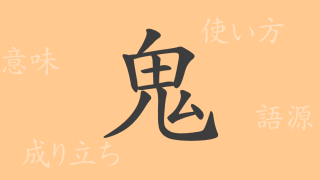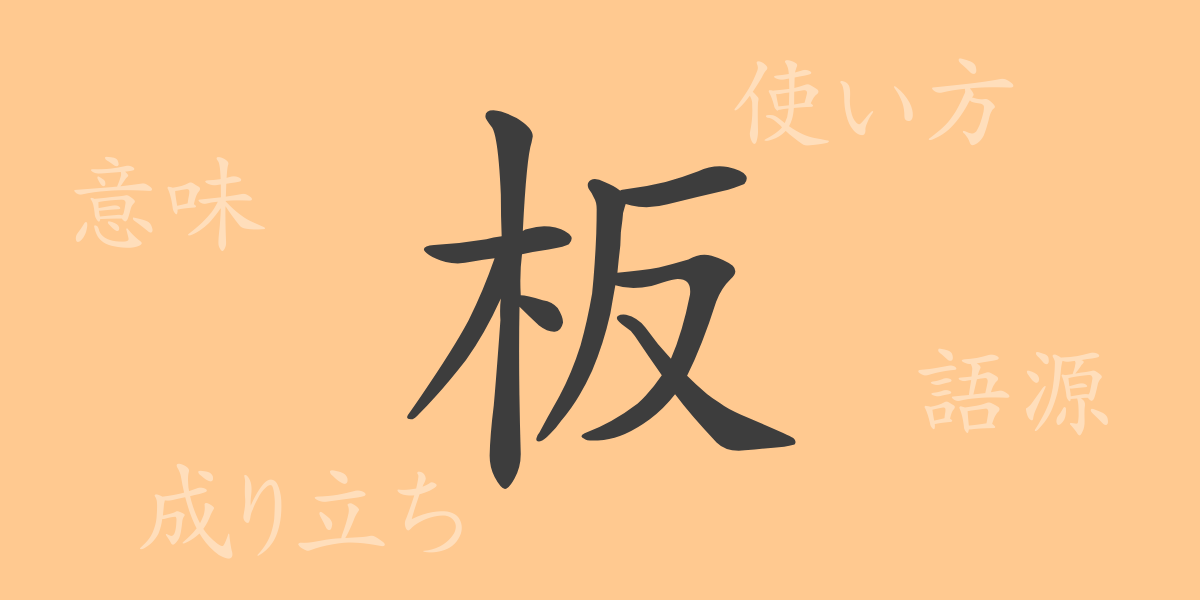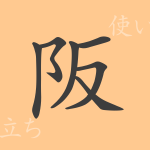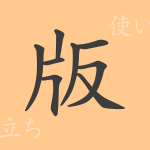In the rich character culture of Japan, kanji plays a crucial role, with “板” (ハン, いた) deeply embedded in our everyday lives and used across various contexts. This article focuses on the kanji “板”, exploring its origins, meanings, applications, and its use in phrases and idioms, diving deep into its allure.
Origins of 板 (ハン, いた)
The kanji “板” originates from the process of cutting wood and flattening it into planks, meaning ‘flat pieces of wood’. It derives from ancient China where flat wooden boards were first made. The character combines “木” (き, wood) and the phonetic element “反” (そる), suggesting the reverberation or resonance during woodworking.
Meaning and Usage of 板 (ハン, いた)
“板” primarily means ‘a flat piece of cut wood’, but by extension, it refers to ‘any thin, hard flat material’ and metaphorically to ‘a standard or measure for judgment’. For instance, it appears in terms like “議題板” (ぎだいばん, agenda board) for listing meeting points and “掲示板” (けいじばん, bulletin board) for displaying information, where ‘板’ connotes a foundational or planar surface.
Pronunciation, Stroke Count, and Radical of 板 (ハン, いた)
The basic details about the kanji “板” are as follows:
- Pronunciation: The on-reading is “ハン” (ハン), and the kun-reading is “いた” (いた).
- Stroke Count: “板” has a total of 8 strokes.
- Radical: The radical is “木” (き), categorized under wood-related kanji.
Phrases and Idioms Using 板 (ハン, いた) and Their Meanings
There are numerous idioms and proverbs that include “板”, each carrying unique meanings. For example, “一枚板” (いちまいいた) refers to a single piece of wood without joints or cracks, metaphorically representing purity or consistency. “板につく” (いたにつく) is an idiom that means to improve at something until it fits perfectly. “板に水を流す” (いたにみずをながす) is a proverb meaning to let bygones be bygones, literally ‘letting water flow over the board’ to wash away past events.
Summary on 板 (ハン, いた)
The kanji “板”, with its simple yet rich meanings and applications, is widely used in the Japanese language. Originating from the symbolic shape of wood, this character frequently appears not only in everyday life but also in business and cultural contexts. Through idioms and phrases, “板” serves as a versatile means of expressing various scenes and emotions, enriching the world of our language.

























